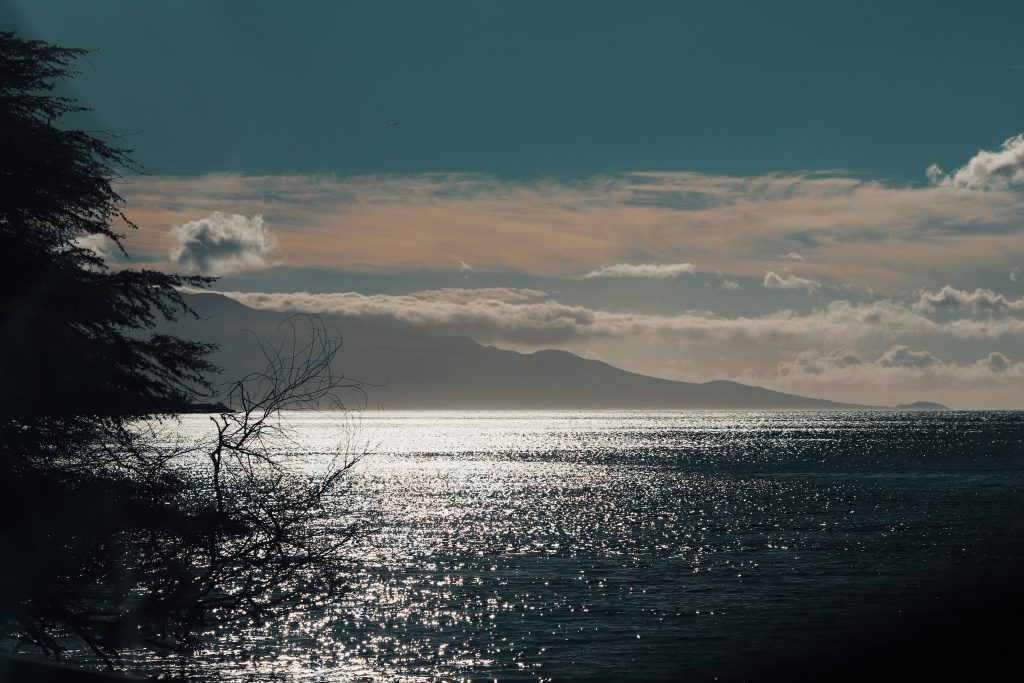
Sky: The word for sky is lani. Pauli means the sky in the sunset direction is very dark, and early Hawaiians believed it would forecast high surf, or kaiko’o. Darkness to the west suggests a migratory low and cold front heading for the Islands, which very well could generate higher surf for north and west shores. A completely overcast sky without wind is po’ipu. If the overcast sky was extremely dark, it was believed that Kulanihako’i (the source of thunder, lightening, and other severe weather) was present. Words for astronomical bodies in the sky include la (sun), mahina (moon), and hoku (star).
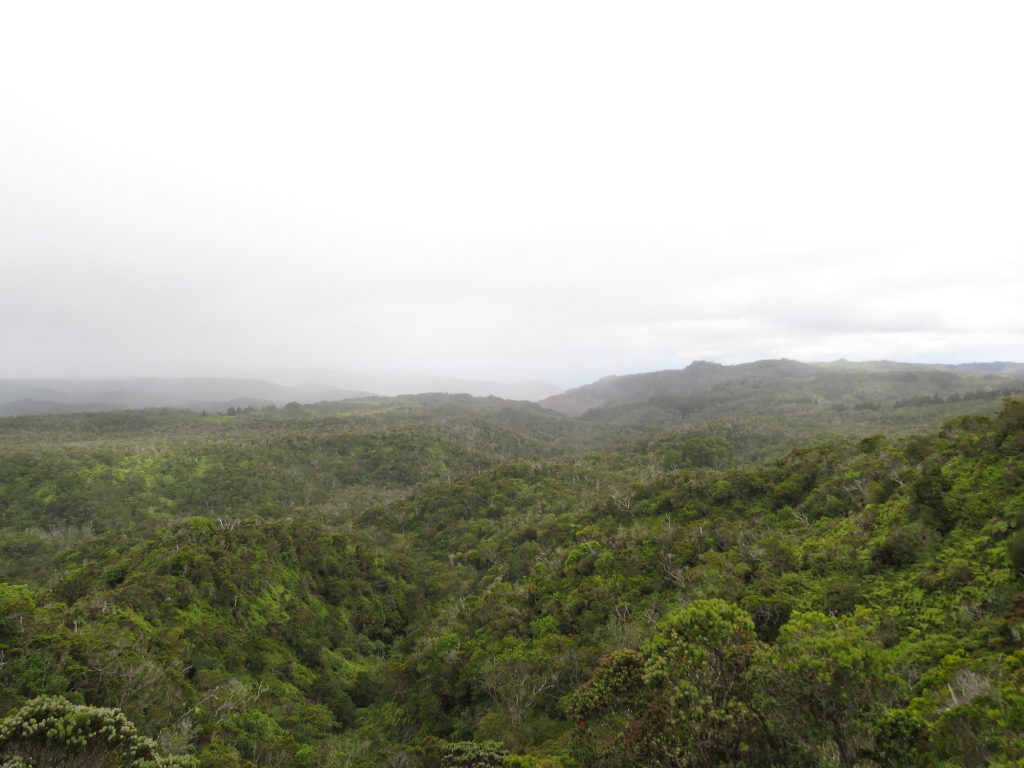
Rain: Ua is the generic term for rainfall, but there are many terms for precipitation. For example, ‘awa refers to a cold mountain fog or mist. Ua ho’okina is a continuous rain, ua lanipili is a torrential rain, and kualau refers to rainfall over the open ocean. Local names were also given such as ua Kuahine , what is now commonly called Manoa mist, and ua lani ha’aha’a for rainfall in Hana, Maui. And of course, the sign of good fortune, the rainbow, is anuenue. The duration of rainfall could be judged by the accompanying weather: a long rain (ualoa) fell with very little wind, but if thunder, lightening, or even a rainbow were present, the rains would be short (uapoko). A red sunset, aka’ula, would foretell the cessation of rainfall. Uahea refers to a cold rain and hau is the term for ice and snow.
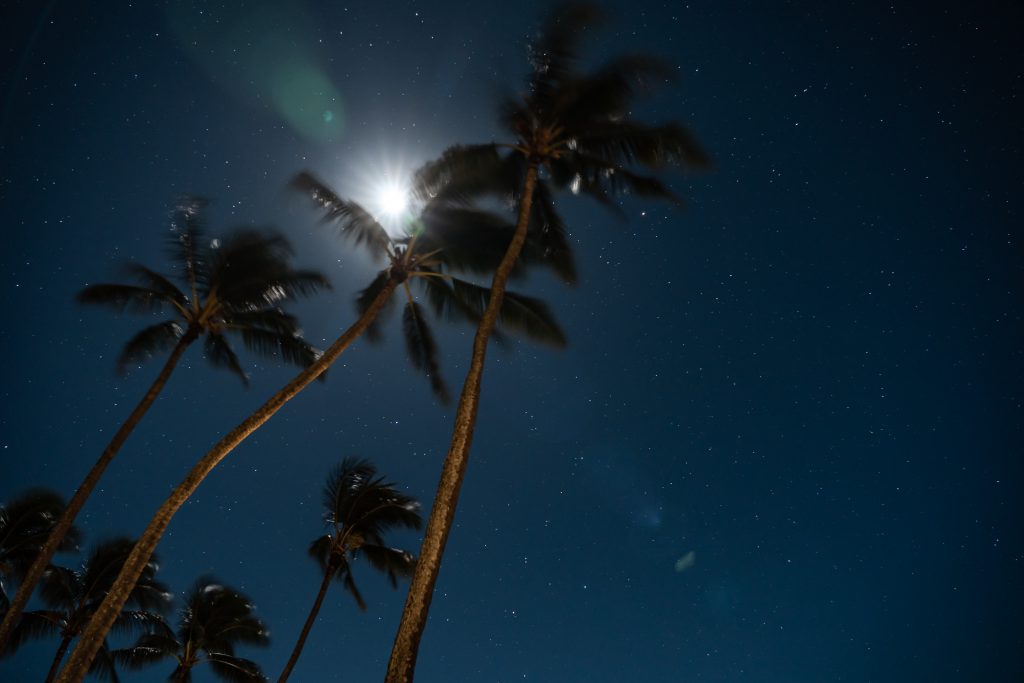
Wind: The general term for wind is makani, but once again, there are many, many wind words. Variable winds are makani polua and fair winds ‘olu’olu. Trade winds have many names such as Moa’e, A’e, A’e Loa, Moa’e Lehua and Mao’e pehu. Strong north winds are Ho’olua. Local names include ‘Alahonua (Hilo), Apa’apa’a (Kohala, Hawai’i), Alahou (Moloka’i), Kaua’ula(Lahaina), and ‘Ahiu (Kahana, ‘Oahu). Each district, or ahupua’a, was also associated with local wind names.
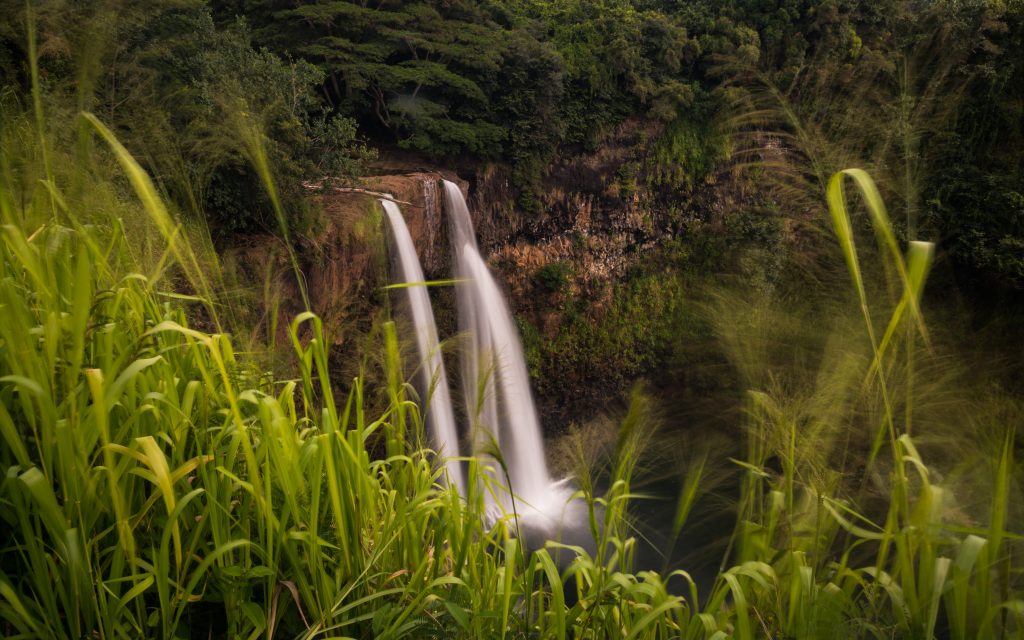
Water: Wai means fresh water, or more generally, any liquid that is not seawater, and often refers to a stream. Ala refers to a path or road, and thus alawai means water path or canal. Punameans a fresh water spring. Kai is the term for seawater and also the near sea. Moana refers to the far sea, beyond the horizon. Kai holoa refers to a lagoon and a wave or surf is nalu.
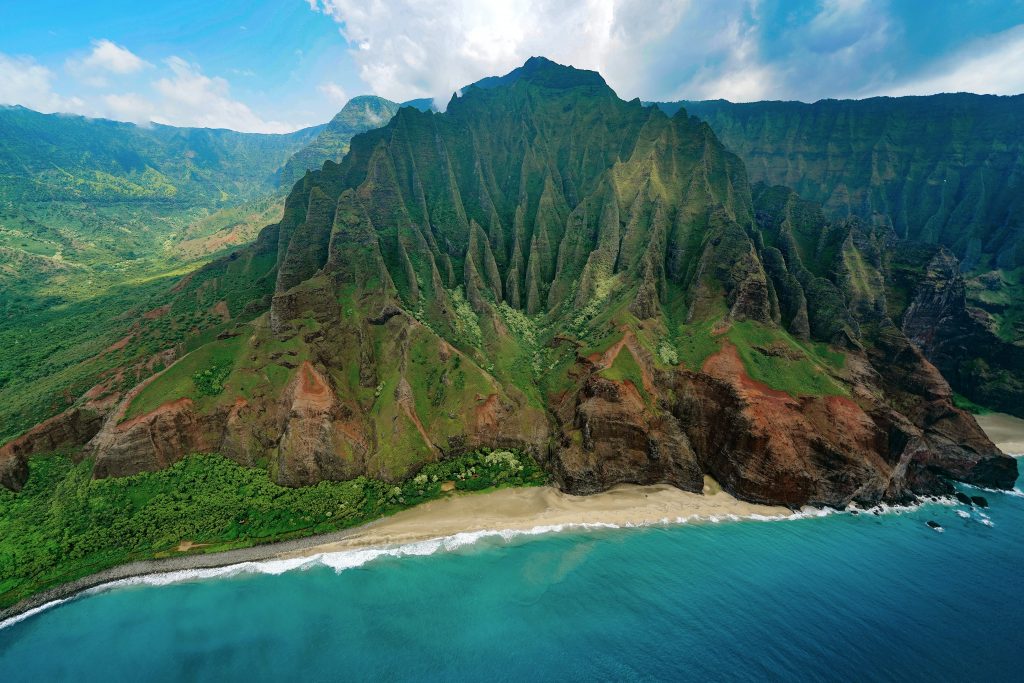
Land: ‘Aina refers to the land or earth. Hawaiians divided the land into districts called ahupua’a, which formed a thin wedge of land running from the ocean to the interior mountains. In this way, each district controlled a wide range of resources from the uka (mountains) where bird feathers and canoe trees could be collected, through the lowland kula (fields) where agriculture was concentrated, to the kai (near sea) where marine resources could be gathered. Ahupua’a were grouped into larger districts called moku, which also refers to individual islands.
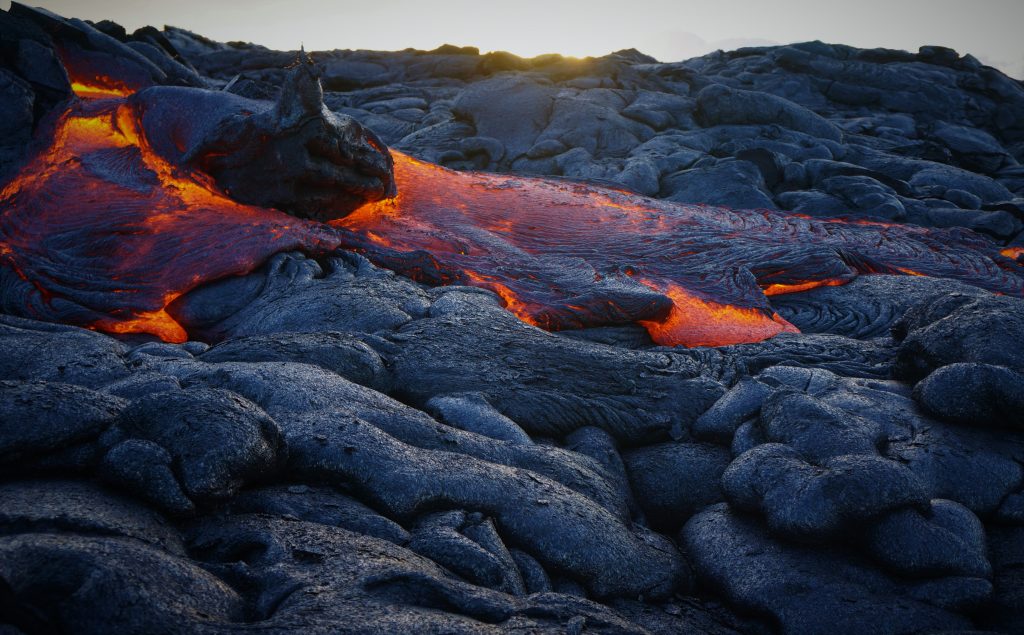
Landforms: Hawaiian words for landforms include lua (pit or crater), lua pele (volcano or crater), mauna (mountain), kahakai (beach), lae (cape or promontory), pu’u (hill or peak), pali (cliff), awawa (valley), pohaku (rock or stone), pahoehoe (smooth lava), and a’a (rough lava).
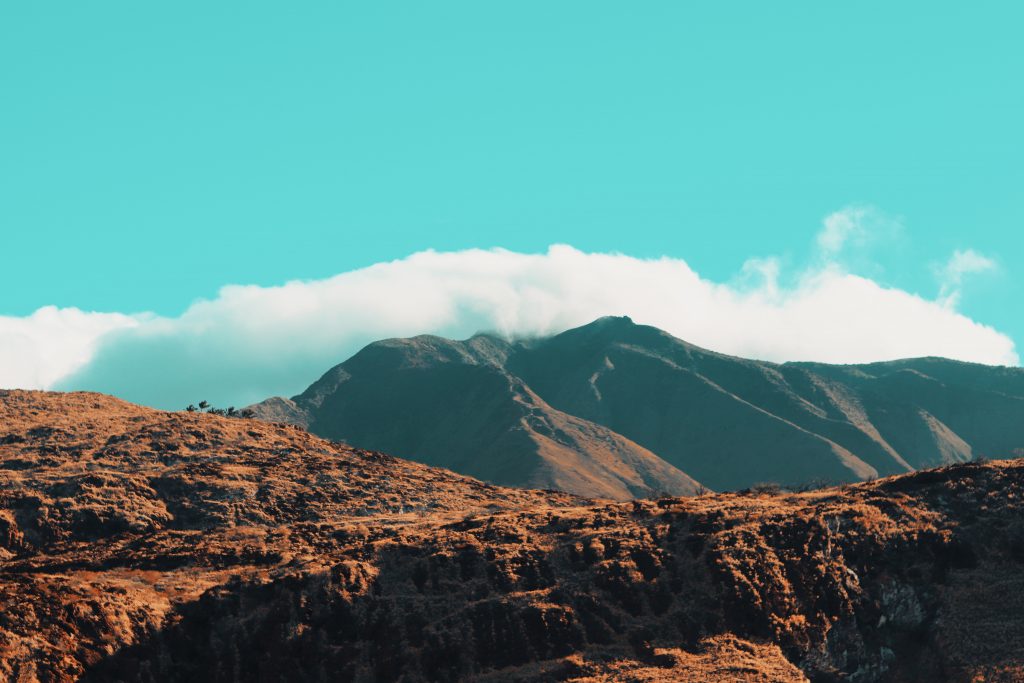
Direction: The visible sea is kai and makai means toward the sea. Mountains are uka and mauka means toward the mountains. The cardinal directions are recognized as ‘akau (North), komohana (West), hikina (East), and hema (South).

Place Names: Many place and street names in Hawai’i include references to natural features, and generally include two or more Hawaiian words. Mauna (mountain) Kea (white), for example, refers to the frequent winter snow cap on Hawai’i’s tallest mountain.The town of Pukalani (hole in the sky) on the leeward slopes of Hakeakala sits where a large wind eddy creates a frequent clear opening in the clouds. Wai’ale’ale on Kauai, one of the world’s wettest spots, means “overflowing water.” The most common adjectives are ka (the), loa (long), nui (large), iki (small), and ‘ula (red). The common prefixes hana and hono refer to bays, for example Honolulu means “sheltered bay.” Hale means “house.”
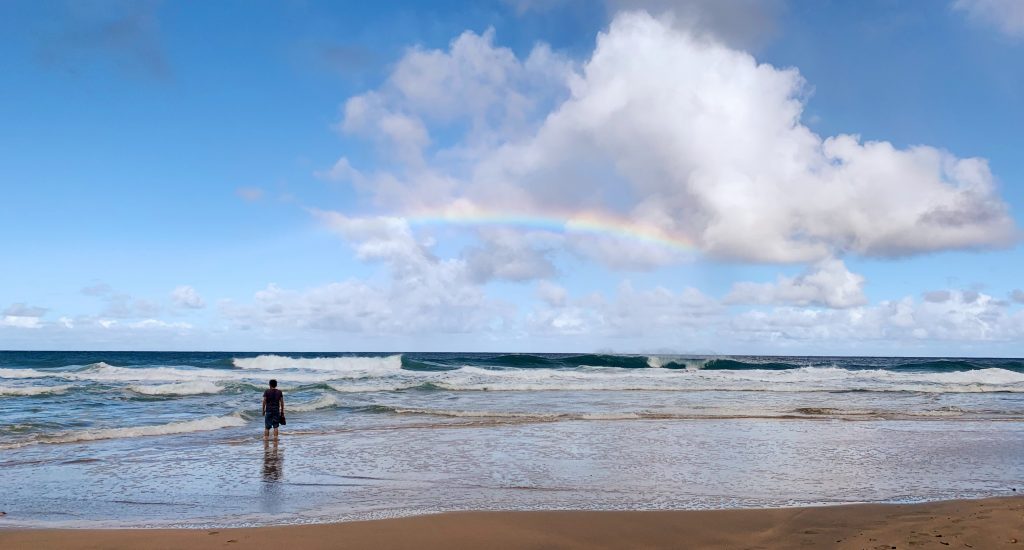
Clouds: The basic Hawaiian word for cloud is ao, but there are many cloud descriptions. The scattered, cotton-puff trade wind cumulus clouds are called aopua’a. Pua’a means pig, and thus a row of cumulus clouds reminded Hawaiians of a mother pig with a train of piglets following her. These clouds mean fair weather for the near future. A bank of these puffy clouds is called‘opua. Another formation is aopehupehu, with pehu meaning to swell up. When cumulus clouds swell up, or grow upward, it usually means rainfall. On ‘Oahu, as these clouds grew against the mountains, the darkness at the base of the clouds was a clue to early Hawaiians to where the rain would fall. Higher, lighter bases often meant that most rain would fall on the leeward side of the Ko’olau crest, filling leeward streams, and darker lower bases meant more windward showers. Clouds are also named after colors, with ‘ele’ele referring to a black cloud and ke’oke’o to a white cloud. A sheltering cloud is called ho’omalumalu and a threatening cloud, ho’oweliweli.
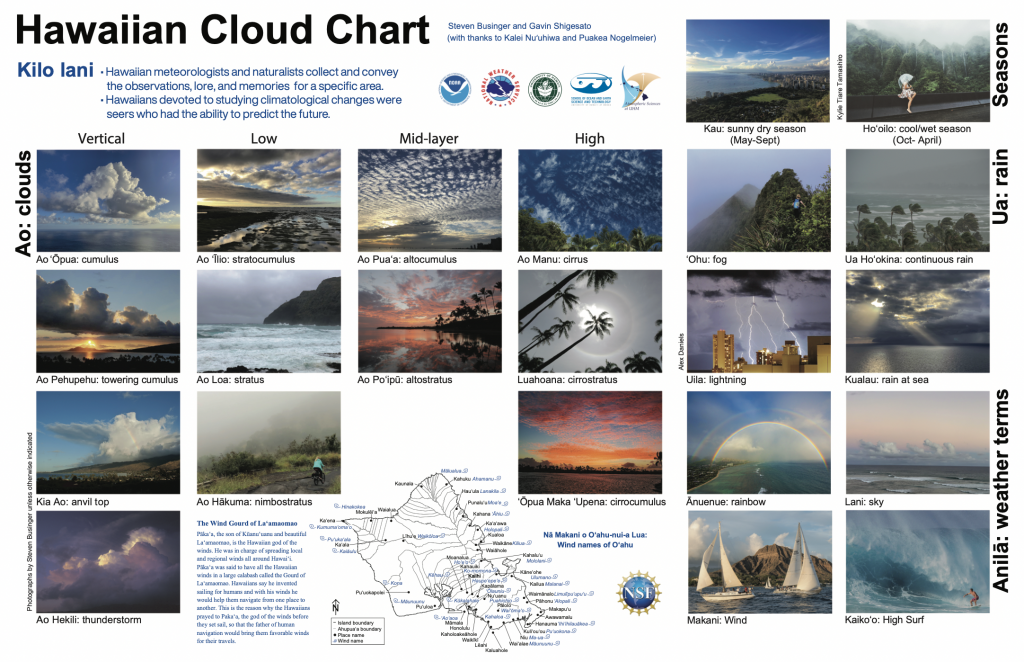
References:
Piianaia, Abe (1993) Early Hawaiian Concepts of Weather and Climate, in Prevailing Trade Winds, Marie Sanderson, Ed., pages 7-11, UH Press, Honolulu, HI.
Pukui, M.K., and Elbert, S.H. (1992) New Pocket Hawaiian Dictionary, UH Press, Honolulu, HI, 256 pages.
Juvik, S.P., and Juvik, J.O., eds. (1998) Atlas of Hawaii, 3rd Ed., UH Press, Honolulu, HI, 333 pages.
Businger, S., & Shigesato, G. (n.d.). Hawaiian Cloud Chart.
